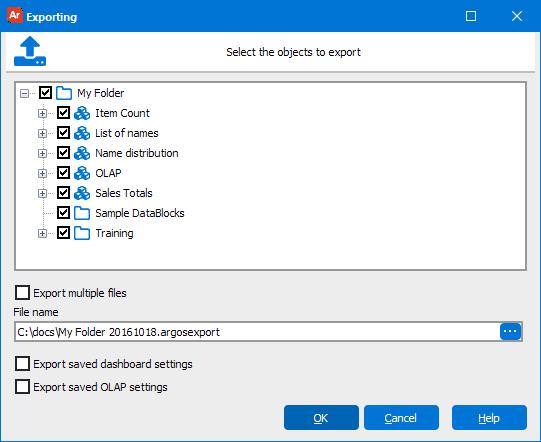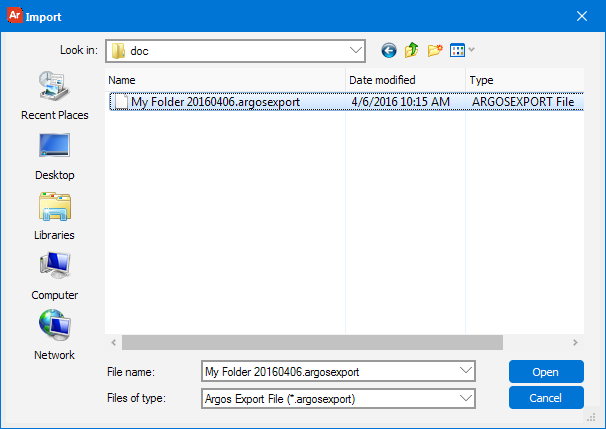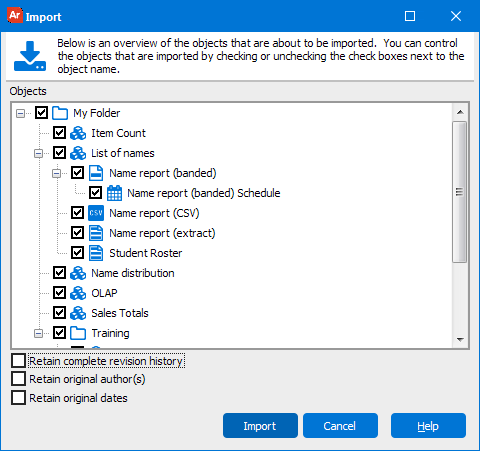Export/Import Argos DataBlocks
DataBlocks can be exported from Argos and saved to a file system. Exported DataBlocks can then be imported back into Argos on the same or a different MAPS server. Exported DataBlocks have an .argosexport file extension.
The image below shows the main Argos interface, including the Import and Export buttons.

Exporting DataBlocks
To export, first select the DataBlock or folder containing the DataBlock, then:
- Go to File -> Export in the menu; or
- Click Export on the toolbar; or
- Right-click and select Export from the context menu.
The Exporting dialog box shown below asks for a destination and file name for the exported DataBlock or folder. You can choose to change the default file name. You may also exclude individual reports or DataBlocks from the export by unchecking the boxes listed.

If you chose a folder that contains multiple DataBlocks, you can use the Export multiple files checkbox to save each DataBlock as an individual file. Leaving the box unchecked exports all DataBlocks to a single file.
The Export saved dashboard settings and Export saved OLAP settings checkboxes allow you to include these items in the export file. Otherwise, any saved settings associated with the objects will not be retained.
Note: The settings that are exported are only those settings which are visible to the user performing the export. Any private settings created by other users will not be retained. Upon import, the settings will be noted as having been created by the user who performed the import, even if they were originally shared settings that were created by a different user.
Exporting the Entire Explorer Tree
All DataBlocks in the explorer tree can be exported by leaving all objects in the tree deselected, then select Export using any of the methods above. In this case all DataBlocks in the entire tree will be exported. You will be given an option to export all DataBlocks into one file, or individual files as shown in the figure below.

Importing DataBlocks
DataBlocks that have been previously exported (and saved to a file system in .argosexport format) can be imported into Argos. This is accomplished by selecting a location in the tree (a folder, or the root of the tree) where you want the file to be imported into, then select:
- File -> Import in the menu; or
- Import from the Main Argos toolbar; or
- Right-click in the explorer tree and select Import from the context menu.
The Import dialog shown below will then appear where you can select the file to import.

If no objects in the tree are selected prior to selecting Import, the imported DataBlock(s) will be placed in the root of the tree.

You can choose to exclude some objects from the import. Additional options include:
- Retain complete revision history - import any revision history associated with imported DataBlocks.
- Retain original author(s) - import "created by" information instead of replacing it with your username.
- Retain original dates - preserve the original creation date for DataBlocks, reports, and schedules. Note: Default dashboards are created upon import and will therefore show the import date regardless of this setting.
These options are also available when pasting copied objects in the explorer tree.